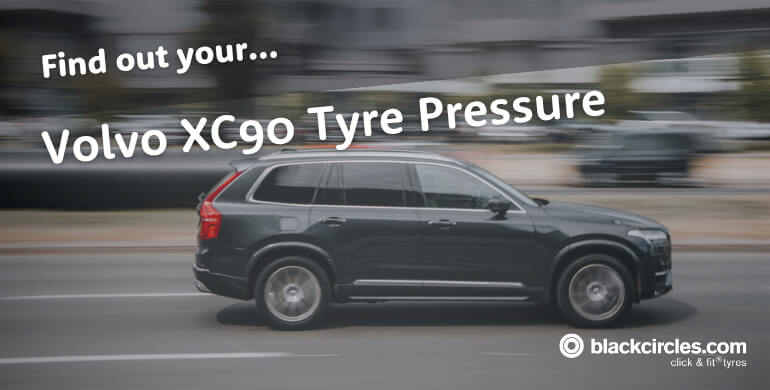Join the conversation
We love to hear from our customers. Connect with us today and let’s start a conversation.
...searching

One of the more important, and often overlooked, aspects of vehicle safety and efficiency is maintaining the correct tyre pressure.
Whether you’re heading out on a long journey or just running local errands, properly inflated tyres contribute to better fuel economy, more responsive handling, and improved tyre longevity.
If you’re looking for the correct air pressure for a Volvo XC90, it’s worth noting that the guidance can vary depending on the year and generation of your vehicle.
Volvo has made subtle adjustments to tyre recommendations over time to reflect changes in wheel size, load capacity, and suspension setups.
To simplify things, we’ve reviewed the official handbooks for the past 8 years of Volvo XC90 models and compiled a table of tyre pressure recommendations.
While the table below provides general guidance, the most accurate way to check the correct pressure for your specific XC90 is to look at the sticker located on the inside edge of the driver’s (or occasionally passenger’s) door frame.
This label typically displays pressures for both normal and fully loaded conditions and may list different values for front and rear tyres depending on the situation.
Below is a summary of manufacturer-recommended tyre pressures for the Volvo XC90 across recent model years*.
The data has been sourced from digital handbooks available through Volvo’s official support site.
| Years | Tyre Size | Normal Load (Front) | Normal Load (Rear) | Laden (Front) | Laden (Rear) | ECO Pressure (Front/Rear) |
| 2023, 2024 | 235/60 R18 | 240 kPa (35 psi) | 240 kPa (35 psi) | 270 kPa (39 psi) | 270 kPa (39 psi) | 270 kPa (39 psi) |
| 2023, 2024 | 235/55 R19 | 240 kPa (35 psi) | 240 kPa (35 psi) | 270 kPa (39 psi) | 270 kPa (39 psi) | 270 kPa (39 psi) |
| 2023, 2024 | 275/40 R21 | 270 kPa (39 psi) | 270 kPa (39 psi) | 270 kPa (39 psi) | 270 kPa (39 psi) | 270 kPa (39 psi) |
| 2023, 2024 | 275/35 R22 | 270 kPa (39 psi) | 270 kPa (39 psi) | 270 kPa (39 psi) | 270 kPa (39 psi) | 270 kPa (39 psi) |
| 2023, 2024 | 275/45 R20 | 240 kPa (35 psi) | 220 kPa (32 psi) | 270 kPa (39 psi) | 270 kPa (39 psi) | 270 kPa (39 psi) |
| 2023, 2024 | Temporary Spare | 420 kPa (60 psi) | 420 kPa (60 psi) | 420 kPa (60 psi) | 420 kPa (60 psi) | – |
*Disclaimer: The information provided in this article is intended for reference purposes only. It should not be considered as authoritative or fact. Tyre pressures can vary based on a variety of factors. We strongly recommend that you consult your vehicle's handbook or contact the manufacturer directly to obtain the official tyre pressure recommendations. We assume no responsibility for any discrepancies or inaccuracies that may be present.
If you’d like to get the exact tyre pressure recommendation for your vehicle. Particularly if you have non-standard wheels or a specific load profile.
The best method is to visit Volvo’s website and enter your Vehicle Identification Number (VIN).
This gives you access to your precise owner’s handbook, complete with load and pressure data tailored to your configuration.
Staying on top of tyre pressure isn’t just about safety, though that’s reason enough. It also plays a role in ride comfort, tyre wear, and even CO₂ emissions. For a premium SUV like the Volvo XC90, where performance and efficiency are finely balanced, it’s especially important to keep everything dialled in.
A quick pressure check every couple of weeks - or before any long trip - is a small habit that can make a big difference.

We love to hear from our customers. Connect with us today and let’s start a conversation.